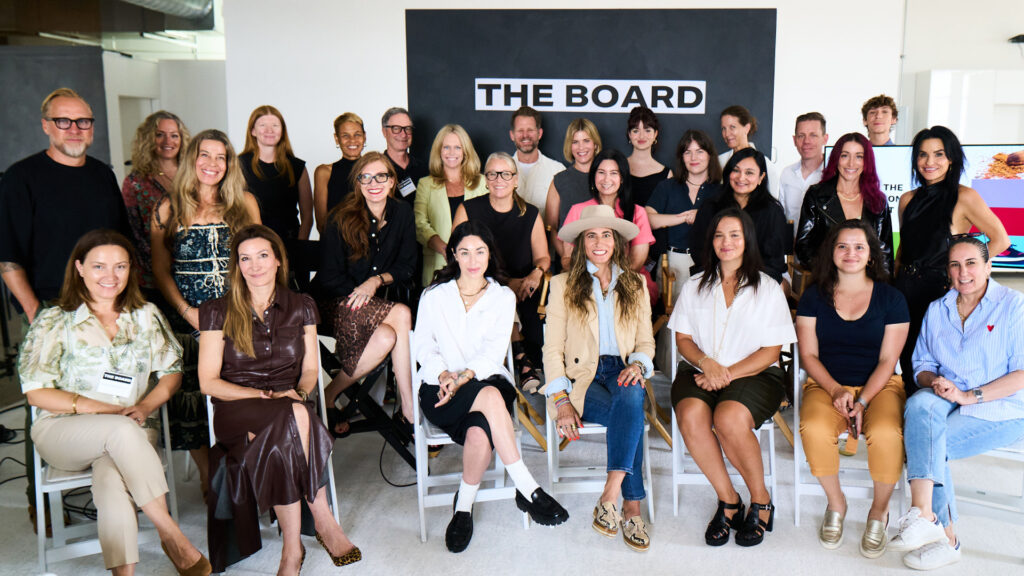
Building Brands That Matter in Culture
By Rebecca Bartlett
Cultural Relevance: Everyone wants it, few understand it.
Last week, I had the honor of participating in a panel discussion at THE BOARD’s Quarterly Board Meeting in LA with three other powerhouse brand builders: Erika Weiss, Jenifer DeSofi and Kirsten Ludwig.
We explored the idea that brands that stay relevant aren’t just reflecting culture, they’re shaping it with intention. Here are some highlights.
What is Cultural Relevance?
It’s the connection between your brand and the real world.
When you’re culturally relevant, you’re in the conversation—understanding the subtext and showing up with something to say that authentically aligns with your brand and values.
It’s not about chasing trends or awkwardly inserting your brand into TikTok memes. It’s about connection. Real, hard-earned, emotionally-resonant connection. The kind that makes people pause, pay attention and maybe even buy the product and the mission behind it.
This pointed definition came from Kirsten Ludwig, and I couldn’t say it better:
“Cultural relevance isn’t just checking boxes on a trend report—it’s the magnetic pull between what you create and what people actually give a damn about. It’s the difference between being noise and being necessary. Between being tolerated and being talked about.
When you nail cultural relevance, you’re not selling—you’re participating in a conversation people already care about. You’re not interrupting—you’re invited.”
Zoom In, Zoom Out, Stand the Test of Time.
How do you create a brand with cultural relevance and longevity?
Culture no longer trickles down from brands, it bubbles up from Communities. Try this rational formula: Get hyper-specific about your community’s mindset while keeping an eye on the cultural sky. Think of brand-building with a microscope—and a telescope. Take Paula’s Choice, an easy example to illustrate based on our two branding engagements with them.
Zoomed in: For 30 years, the Paula’s Choice core community (aka “The Paulas”) has one shared mindset: they are fact-checkers, truth-seekers, researchers, practicalists. The no-bullshit types in a sea of sparkly beauty promises.
Zoomed out: In a world where no one trusts anything anymore (news, institutions, each other), the desire for no-bullshit transparency isn’t just a nice-to-have—it’s a cultural movement that is here to stay.
Relevance that sticks comes from connecting the dots between your micro community and the macro cultural currents.
Trendy Labels Are Lazy. Go Deeper.
How do you ensure your brand is rooted in culture and not just aesthetics & buzzwords?
Start by looking under the label. When a trend gets a name (current example: “Trad Wife”), it becomes easy to spread like wildfire—and can be confused with a cultural movement. Always question why the trend exists in the first place and see if there is a timeless human truth hidden within.
In the case of the Trad Wife trend, the surface level is all domestic nostalgia and over-idealized femininity. But what’s beneath is much more revealing: in times of chaos and rapid change, people crave comfort, clarity and control in clearly defined roles and identities. The Trad Wife trend will come and go, but the underlying driver is a timeless insight into the human psyche.
How do you avoid performative branding?
Don’t jump on every bandwagon. Ask the hard questions: Does this align with our values? Is it authentic to our brand? Do we understand what this really means?
Rooting your work in culture means going deeper than the trend report. It means listening for the emotional undercurrent—and only showing up when you have something authentic to say. The most culturally relevant brands aren’t the loudest. They’re the most honest.
Summary
How do you build a brand that actually matters?
- Don’t chase the moment. Understand the movement.
- Don’t label, listen.
- Don’t perform, participate.